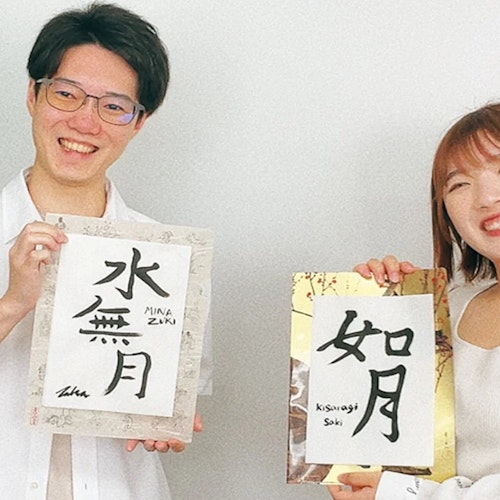
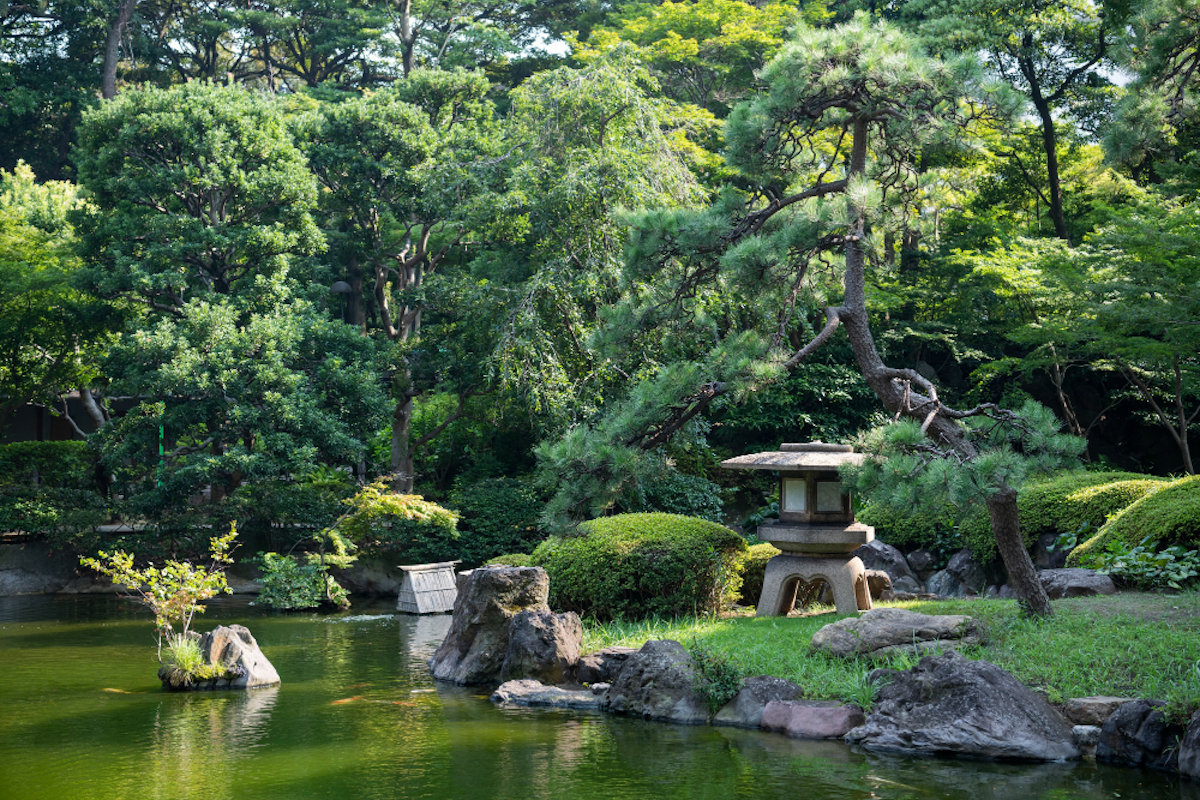
Kyoto, known as the cultural heart of Japan, is a city that beautifully embodies the fusion of ancient traditions with modern life. As the imperial capital of Japan for over a thousand years, it's home to countless temples, shrines, and some of the most stunning gardens in the world. These gardens, deeply rooted in Japanese aesthetics and philosophy, offer not just a visual feast but also a serene space for introspection and communion with nature.
Japanese gardens are an integral part of the country's culture, meticulously designed to capture and reflect the subtle and profound beauty of the natural world. They're more than just collections of plants and trees; they're living artworks that embody principles of symmetry, balance, and harmony. From the majestic Golden Pavilion of Kinkaku-ji to the tranquil rock garden of Ryoan-ji, each garden in Kyoto tells a unique story and offers an immersive experience into Japan’s rich cultural heritage.
Prepare to be mesmerized by the tranquility and beauty of these iconic Kyoto gardens. Each garden has its unique history, features, and charm that beckon visitors from across the globe.
Kinkaku-ji, or the Golden Pavilion, is a Zen Buddhist temple whose top two floors are completely covered in gold leaf. Originally built in the late 14th century as a retirement villa for Shogun Ashikaga Yoshimitsu, it was converted into a temple after his death. The pavilion is set in a beautiful strolling garden that showcases the building in different perspectives as one walks around the pond.
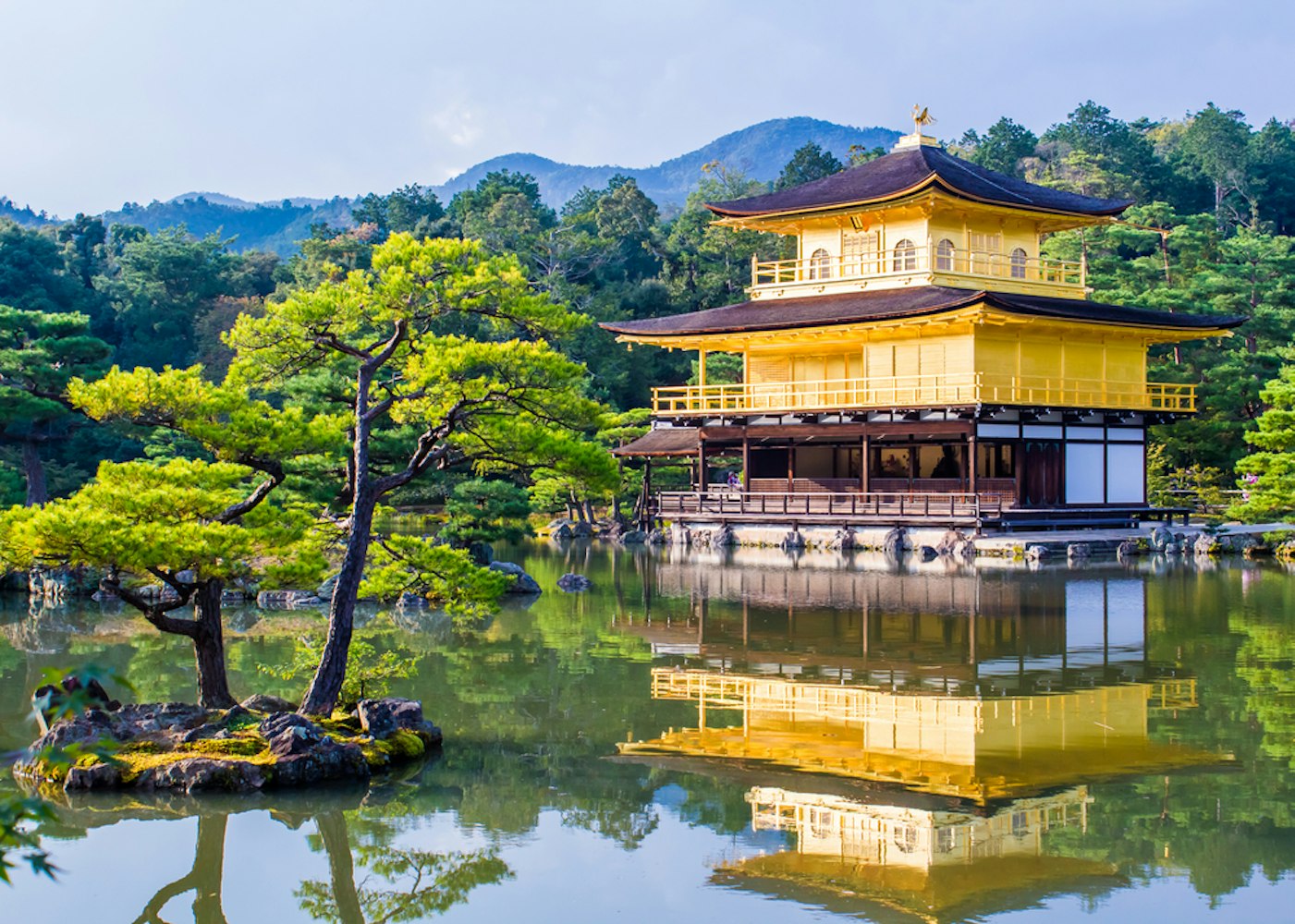
Unique Features: The reflection of the golden pavilion on the mirror pond is a sight to behold. The surrounding garden, with its moss-covered ground and strategically placed stones, creates an atmosphere of tranquility.
Best Time to Visit: Kinkaku-ji is stunning all year round, but it's especially breathtaking in spring with blooming cherry blossoms and in winter when the pavilion is outlined by snow.
Opening Hours & Fee: Located in Kita Ward, Kyoto, the temple is open from 9 AM to 5 PM. The entry fee is 400 yen.
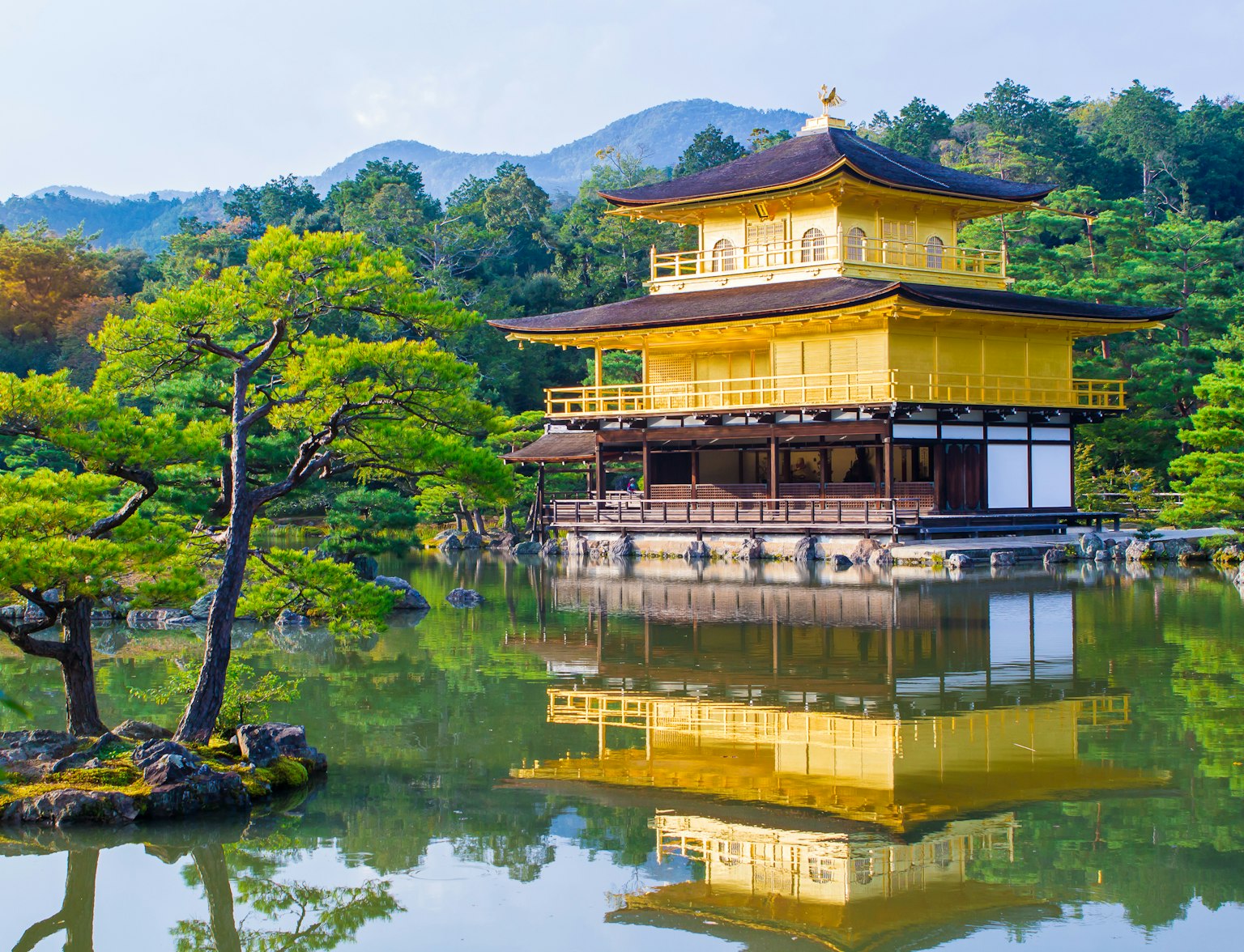
Immerse yourself in the tranquil ambiance of Kinkaku-ji.
Despite its name, Ginkaku-ji, or the Silver Pavilion, isn't covered in silver. It's an elegant two-story structure built in the late 15th century as a retirement villa for Shogun Ashikaga Yoshimasa. After his death, it was converted into a Zen temple.
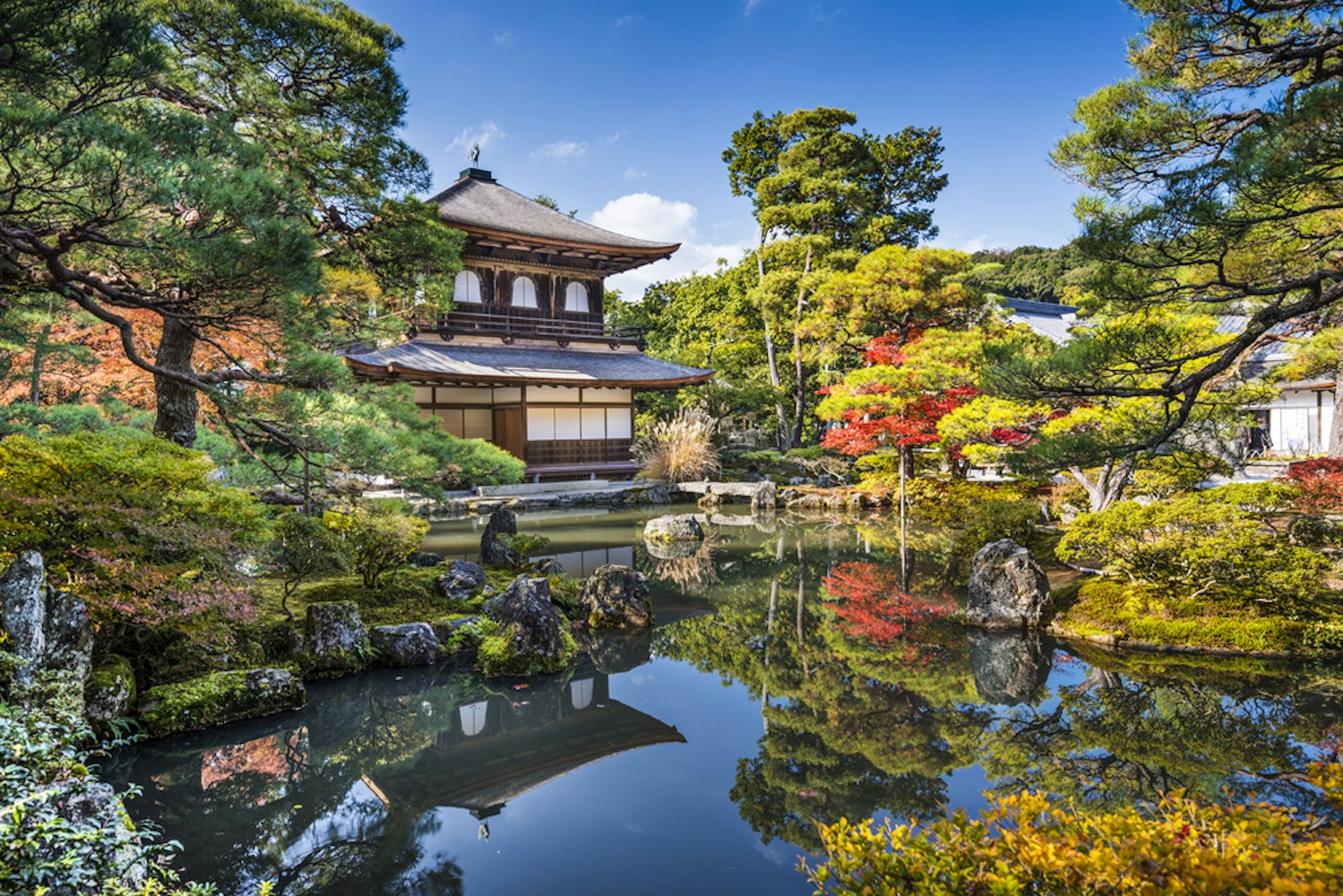
Unique Features: The Silver Pavilion is home to a unique dry sand garden, known as the "Sea of Silver Sand," and an extensive moss garden. The meticulously maintained sand garden features a massive sand cone known as the "Moon Viewing Platform."
Best Time to Visit: The lush greenery of the moss garden is particularly vibrant in the rainy season (mid-June to mid-July) and in the fall when the leaves change color.
Opening Hours & Fee: Located in Sakyo Ward, Kyoto, Ginkaku-ji is open from 8:30 AM to 5 PM (March to November) and 9 AM to 4:30 PM (December to February). The entry fee is 500 yen.
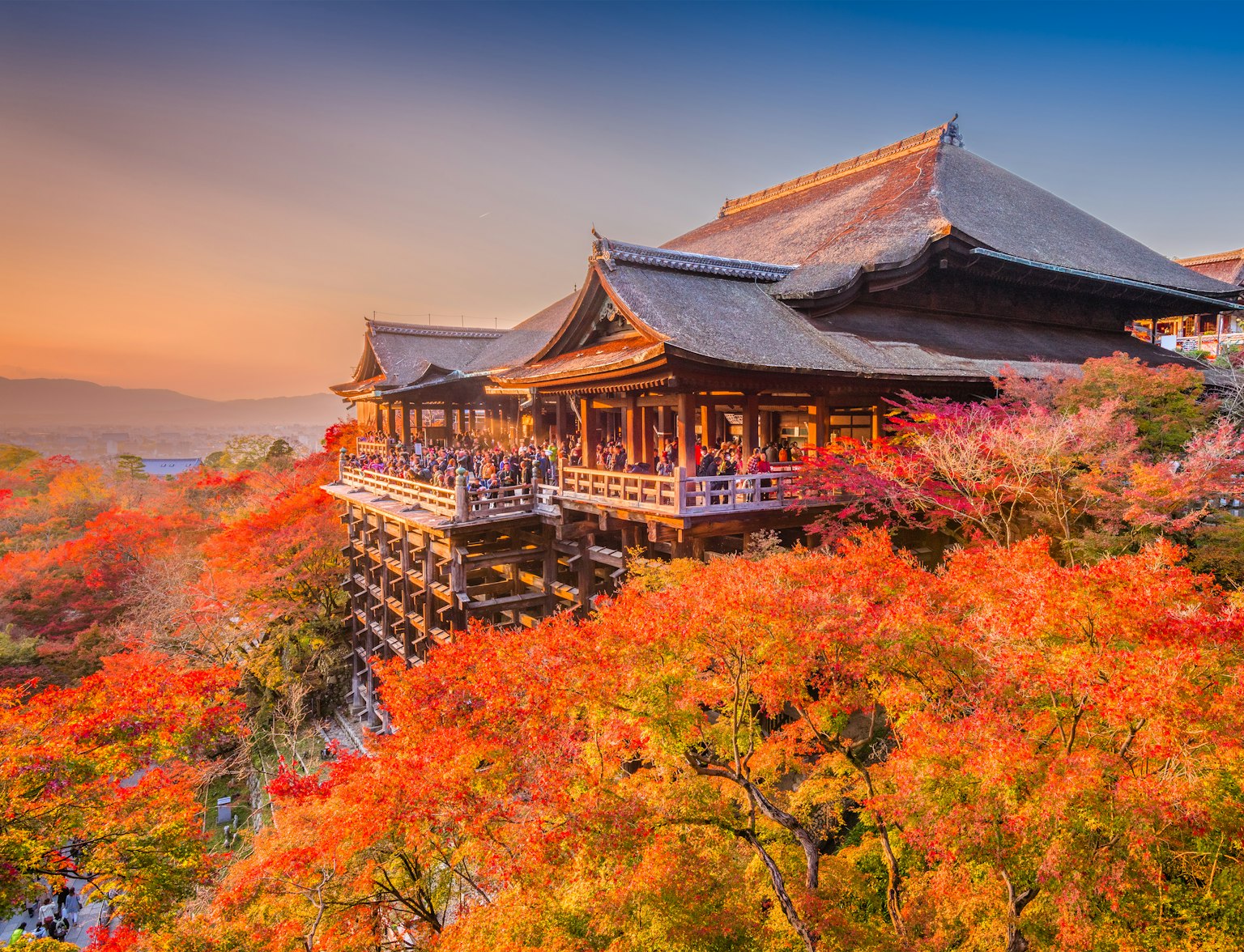
Marvel at the breathtaking Kinkakuji Temple, which gleams in the sunlight amidst lush greenery.
Ryoan-ji is a Zen temple, famous for its mysterious rock garden, thought to be the finest example of a 'karesansui,' a dry landscape or "Zen" garden. The temple was originally an aristocrat's villa during the Heian Period but was converted into a Zen temple in 1450.

Unique Features: The rock garden consists of 15 rocks of varying sizes, carefully composed on a bed of white gravel. The garden is designed so that from any vantage point at least one of the rocks is always hidden from the viewer.
Best Time to Visit: The simplicity of the rock garden lends itself to quiet contemplation in any season. However, the temple's large pond garden is most beautiful in late November when the autumn colors peak.
Opening Hours & Fee: Located in Ukyo Ward, Kyoto, Ryoan-ji is open from 8 AM to 5 PM (March to November) and 8:30 AM to 4:30 PM (December to February). The entry fee is 500 yen.
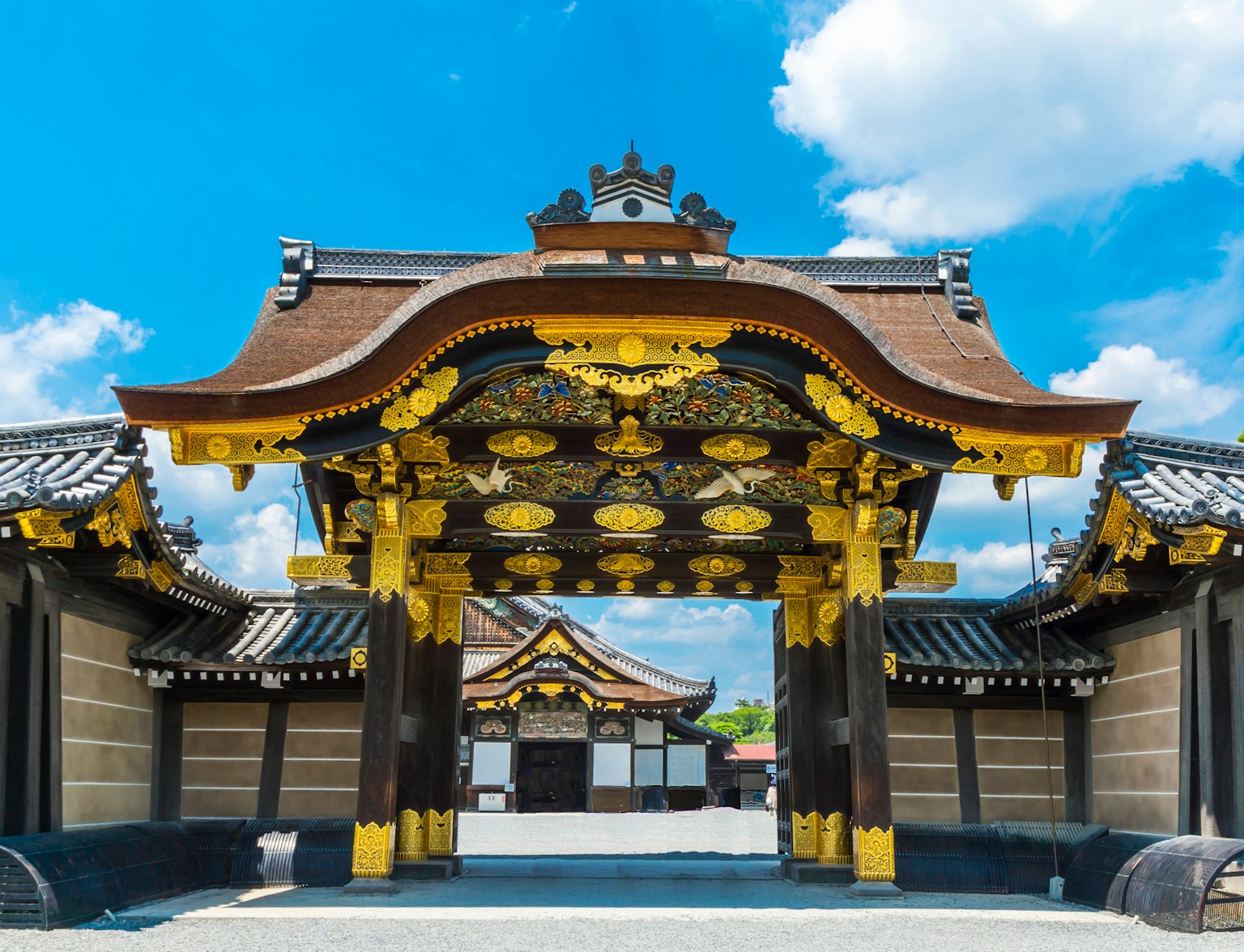
Visit Ryoan-ji with this tour.
Nanzen-ji, established in 1291, is one of the most important Zen temples in Japan. It's nestled at the base of Kyoto's forested Higashiyama mountains and offers stunning views, especially during the autumn leaf season.
Unique Features: The temple complex includes multiple sub-temples and a beautiful garden, but its most distinctive feature is the scenic brick aqueduct that passes through the temple grounds. This aqueduct, part of the Lake Biwa Canal, adds a unique charm to the temple.
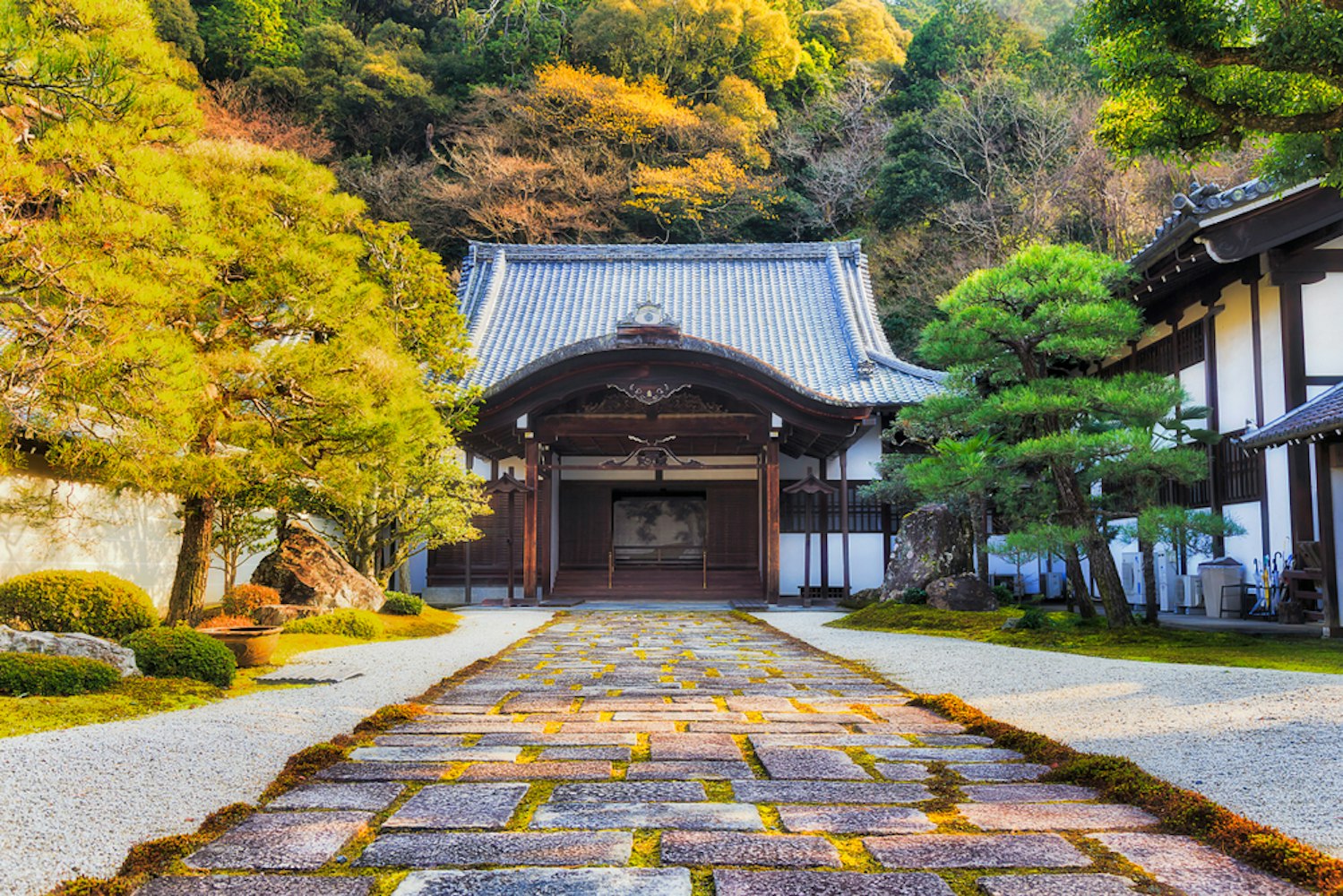
Best Time to Visit: Nanzen-ji is breathtaking in all seasons, but it's particularly enchanting in autumn when the maple trees turn fiery red and orange.
Opening Hours & Fee: Located in Sakyo Ward, Kyoto, Nanzen-ji is open from 8:40 AM to 5 PM (March to November) and 8:40 AM to 4:30 PM (December to February). The entry fee is 500 yen for the Hojo Garden.
Tenryu-ji is the head temple of the Tenryu branch of Rinzai Zen Buddhism, located in Arashiyama. Constructed in 1339, it has been ranked first among Kyoto's top five Zen temples. The temple is also a UNESCO World Heritage site, famous for its incredible landscape garden.
Unique Features: The Sogenchi Garden, designed by the famous garden designer Muso Soseki, is a highlight of this temple. The garden, with its central pond mirroring the surrounding landscape, has retained its original form for over seven centuries.
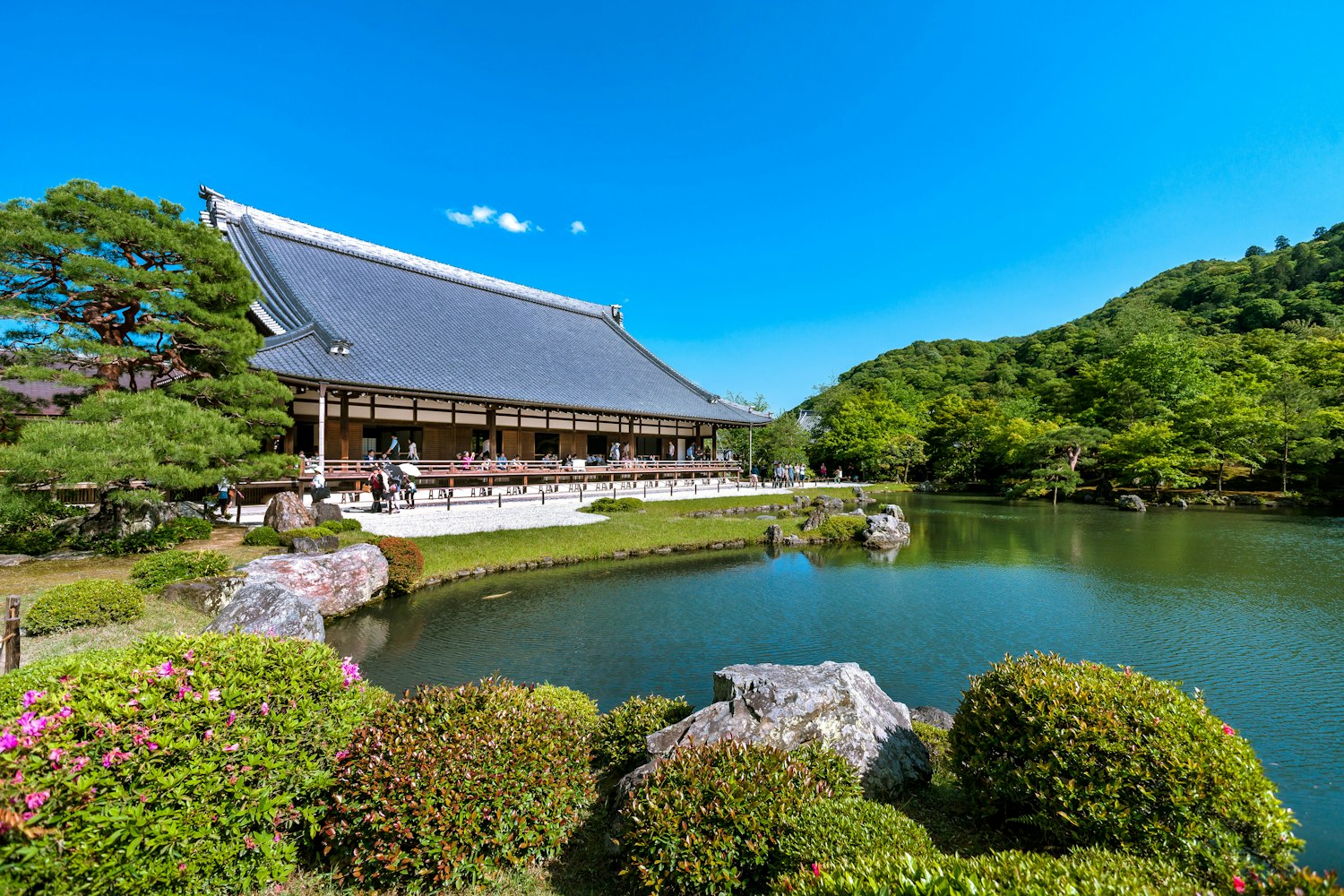
Best Time to Visit: The garden is beautiful throughout the year, but it's especially stunning in spring with cherry blossoms and in late November when the autumn colors peak.
Opening Hours & Fee: Located in Ukyo Ward, Kyoto, Tenryu-ji is open from 8:30 AM to 5:30 PM (March to November) and 8:30 AM to 5 PM (December to February). The entry fee is 500 yen for the temple grounds and an additional 300 yen for the garden.
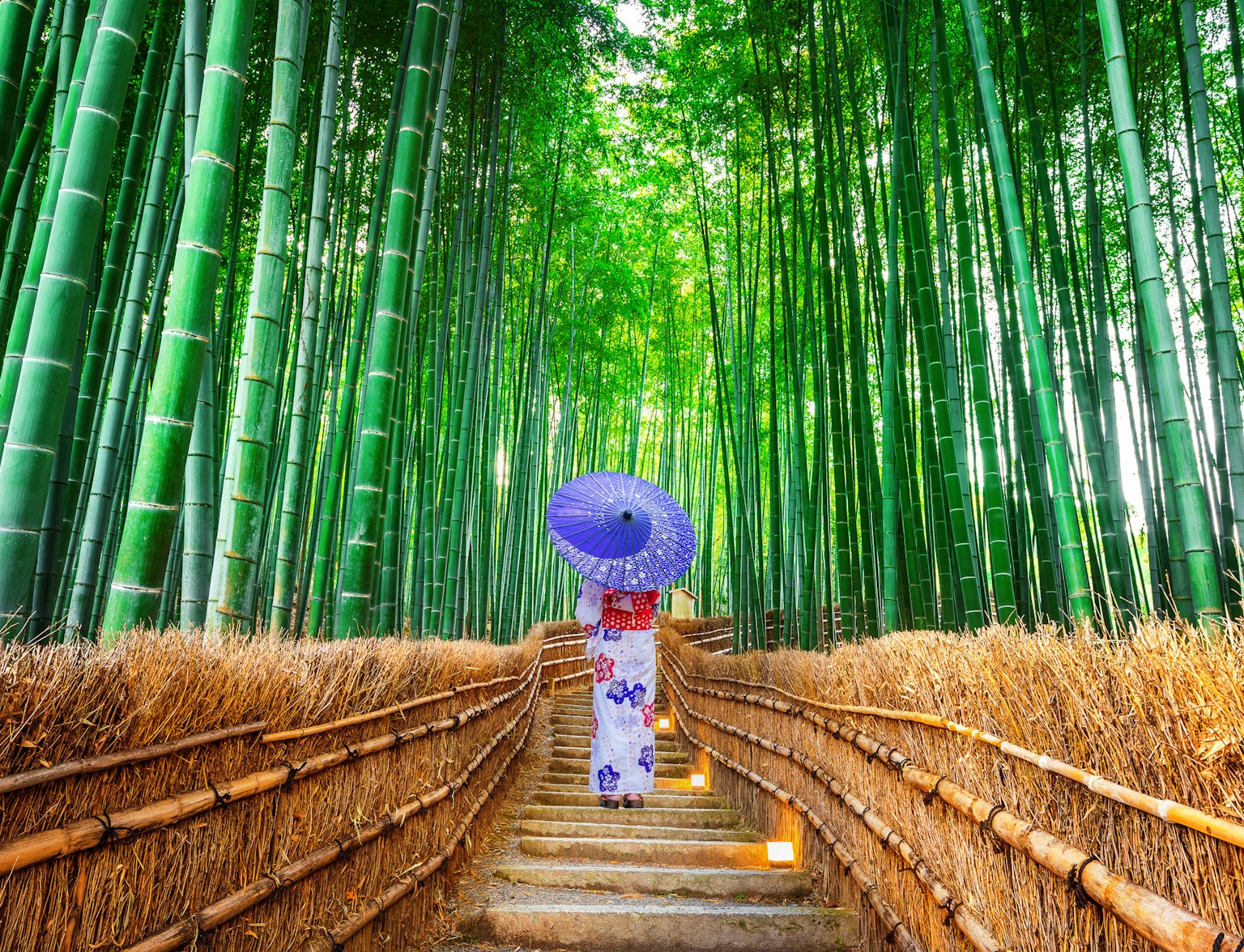
Explore one of the most famous temples in the city, Tenryu-ji.
Shosei-en Garden, also known as Kikoku-tei, is a serene retreat in downtown Kyoto. It's owned by Higashi Honganji Temple but is located a few blocks away from the temple itself. The garden was designed in the early 17th century and features a central pond surrounded by tea houses and walking paths.
Unique Features: The garden is a classic example of a "chisen-kaiyu" style garden where visitors follow a circular path around a central pond. The garden also houses several tea houses, each offering a different view of the landscape.
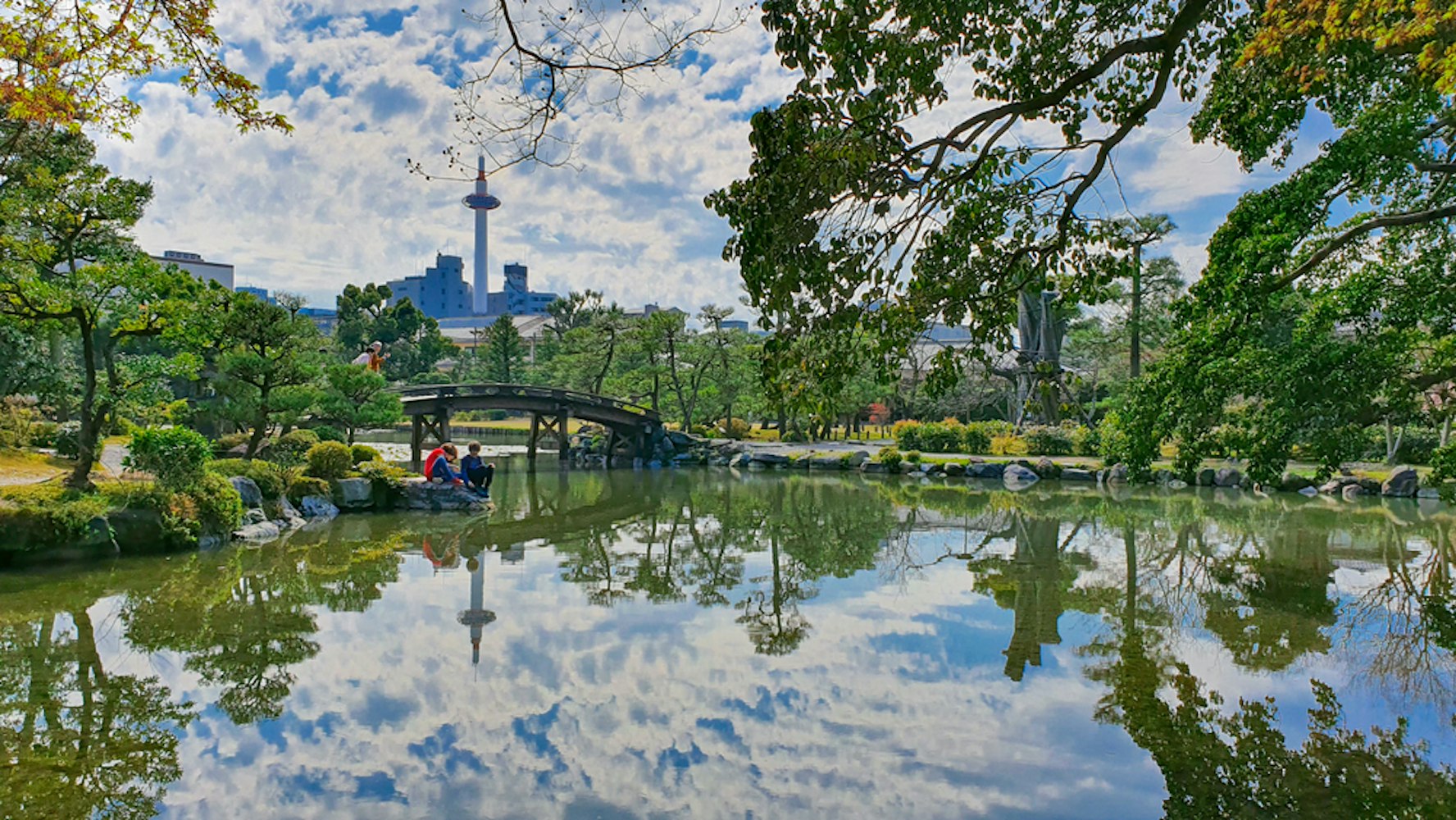
Best Time to Visit: Shosei-en Garden is beautiful all year round, but it's especially enchanting during cherry blossom season in spring and when the leaves change color in autumn.
Opening Hours & Fee: Located in Shimogyo Ward, Kyoto, Shosei-en Garden is open from 9 AM to 5 PM. The entry fee is 500 yen.
Tofuku-ji is a large Zen temple in southeastern Kyoto that's particularly famous for its spectacular autumn colors. The temple was founded in 1236 at the behest of the powerful Fujiwara clan.
Unique Features: Its most popular view is of the Tsutenkyo Bridge, which spans a valley of lush maple trees. The view from the bridge is equally impressive, overlooking a sea of red and yellow in autumn. The Hojo Garden, designed by noted landscape architect Mirei Shigemori, is also remarkable with its contemporary rock gardens.
Best Time to Visit: While the temple can be visited all year round, the best time to visit Tofuku-ji is in late November when the autumn colors are at their peak.
Opening Hours & Fee: Located in Higashiyama Ward, Kyoto, Tofuku-ji is open from 9 AM to 4 PM. The entry fee is 400 yen for the Hojo Garden and Tsutenkyo Bridge.
Daitoku-ji is a sprawling temple complex covering over 23 hectares in northern Kyoto. Established in 1315, it serves as the head temple of the Daitoku-ji school of the Rinzai sect of Zen Buddhism and consists of nearly two dozen sub-temples.
Unique Features: The complex is renowned for its many zen gardens and tea ceremony rooms. Some of its notable sub-temples include Daisen-in, known for its dry landscape garden; Koto-in, famous for its tranquil moss and maple tree garden; and Obai-in, which houses an important cultural property, the painting of the "Dragon of Smoke".

Best Time to Visit: Daitoku-ji is worth visiting all year round, but it's particularly beautiful in autumn when the maple trees in Koto-in's garden turn red.
Opening Hours & Fee: Located in Kita Ward, Kyoto, Daitoku-ji's main temple grounds are open to the public for free. However, individual sub-temples within the complex have their own visiting hours and fees, generally ranging from 9 AM to 5 PM with an entry fee of 400 yen.

Discover the serene beauty of Daitokuji Temple, a Zen Buddhist complex with tranquil gardens and historical significance.
The Philosopher's Path, or Tetsugaku-no-michi, is a charming stone path that follows a canal lined with hundreds of cherry trees. The path is named after the influential 20th-century philosopher, Nishida Kitaro, who was said to practice meditation while walking this route on his daily commute to Kyoto University.
Unique Features: The path spans approximately 2 kilometers, beginning around Ginkaku-ji and ending in the neighborhood of Nanzen-ji. The canal is lined with hundreds of cherry trees, making it one of the city's most popular destinations for hanami (cherry blossom viewing) in spring.
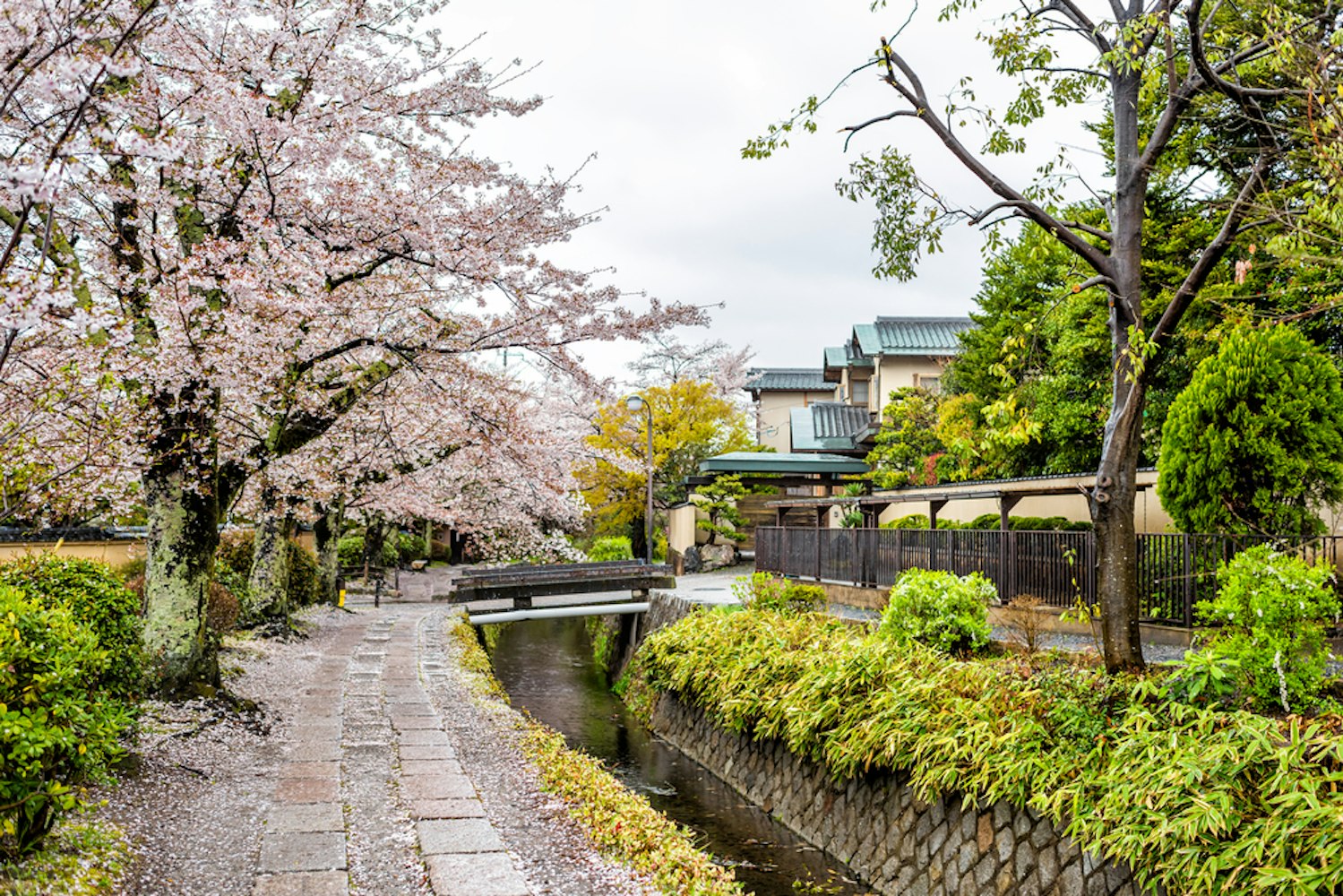
Best Time to Visit: The best time to stroll along the Philosopher's Path is in early April when the cherry blossoms are in full bloom. However, the path offers a peaceful and scenic walk at any time of the year.
Opening Hours & Fee: The Philosopher's Path is located in Sakyo Ward, Kyoto, and is open to the public free of charge, 24 hours a day.
The Kyoto Imperial Palace Park, also known as Kyoto Gyoen, is a large park enclosing the Imperial Palace and Sento Imperial Palace. The park covers an area of approximately 1.3 square kilometers and is located in the center of Kyoto City.
Unique Features: The park features beautifully manicured lawns, elegant bridges, and a variety of trees and flowers. It is home to several historical buildings, including the Imperial Palace itself and the Sento Palace with its gardens.
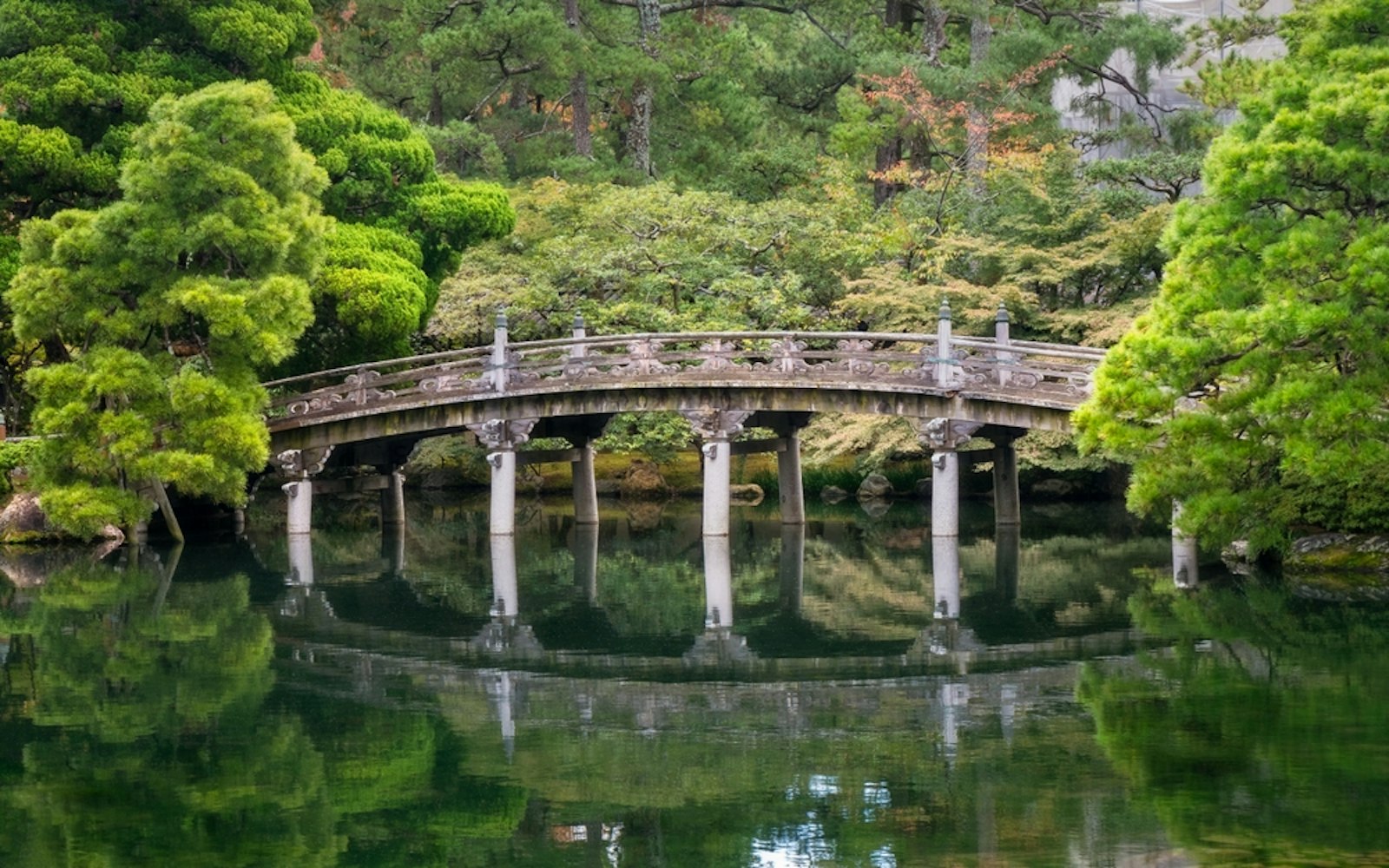
Best Time to Visit: The park is a popular spot for cherry blossom viewing in the spring and for enjoying the autumn colors. However, its expansive lawns and shady groves make it a pleasant retreat all year round.
Opening Hours & Fee: Located in Kamigyo Ward, Kyoto, the Imperial Palace Park is open to the public free of charge, 24 hours a day. However, to visit the Imperial Palace and Sento Palace, you need to join a guided tour, which requires advance reservation through the Imperial Household Agency's website.
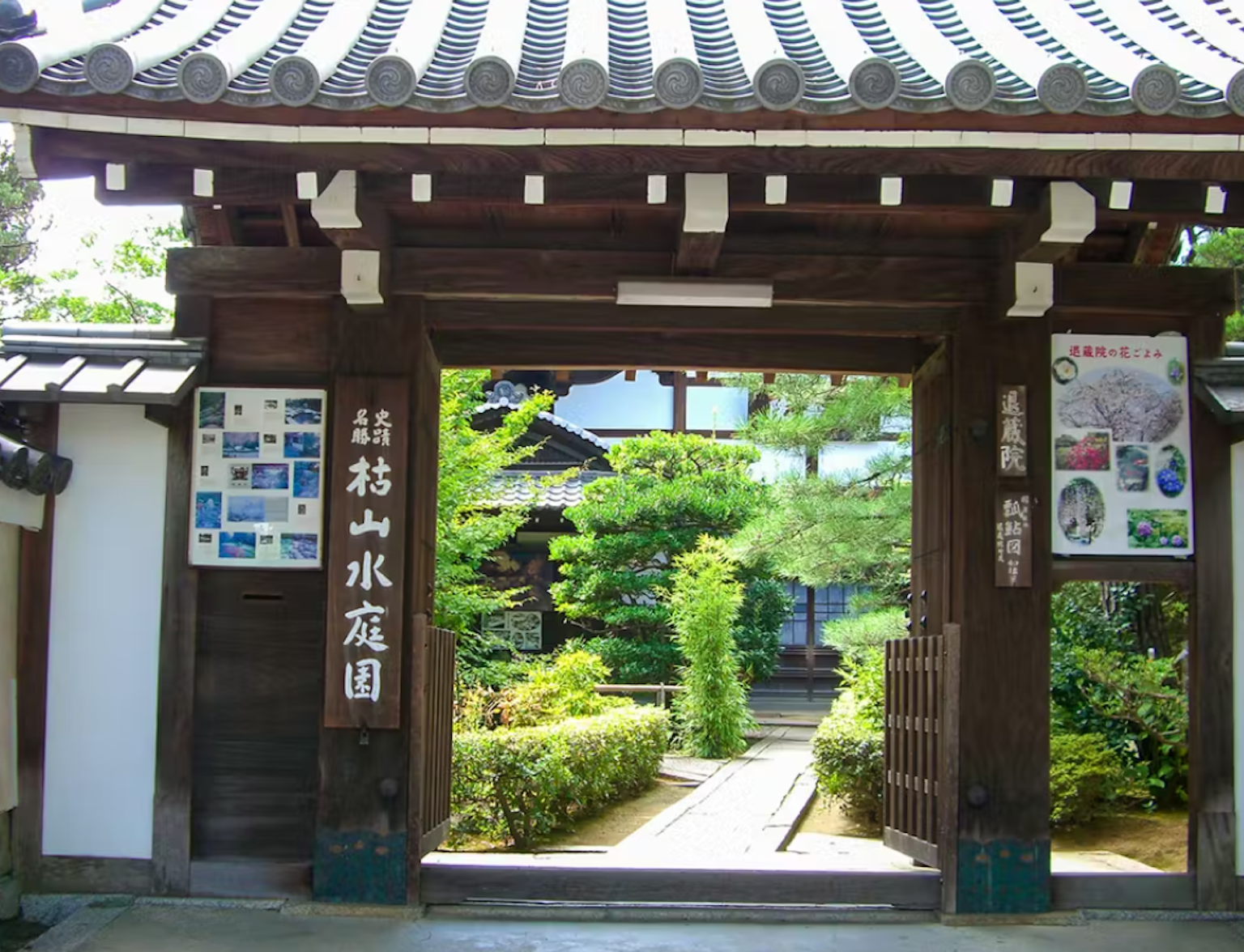
And don't miss the chance to marvel at the awe-inspiring Imperial Palace.
The aesthetics of Japanese gardens are deeply rooted in the principles of harmony (wa), respect (kei), purity (sei), and tranquility (jaku). The aim is to create a miniature and idealized view of nature, evoking a sense of peace and inspiring contemplation.
Harmony is achieved through careful balancing of colors, sizes, and shapes of plants and rocks. Respecting the natural growth and shape of plants is paramount, with pruning and shaping done to highlight their intrinsic beauty, not to force them into unnatural forms.
Purity is represented through the use of water and the careful selection of plants and rocks, symbolizing cleanliness and simplicity. Finally, the ultimate goal is to create a space that promotes tranquility, offering a serene space for meditation and reflection.
Japanese gardens are typically characterized by several key elements:
1. Water: Symbolizing life and purity, water bodies like ponds, streams, and waterfalls are central to many Japanese gardens. They're often populated with koi fish and crossed by wooden bridges.
2. Rocks: Used to represent mountains, islands, or even animals, carefully chosen and placed rocks are another vital element, often arranged in groups of three to represent the Buddhist trinity.
3. Bridges: Bridges, often arched and made of stone or wood, signify a journey from one world to another. They're not just functional but also add aesthetic value.
4. Lanterns: Stone lanterns are a common feature, providing gentle illumination and representing the enlightening nature of Buddhism.
5. Tea Houses: Many gardens feature a small tea house or pavilion where traditional tea ceremonies are held, symbolizing harmony, respect, purity, and tranquility.
6. Paths: Winding paths invite visitors to explore the garden slowly, discovering different views and features along the way.
Our journey through the ten most beautiful gardens in Kyoto has been a captivating exploration. We've witnessed the perfect blend of traditional Japanese aesthetics, nature, and history. Each garden, with its unique design and features, highlighted Kyoto's intrinsic beauty and its deep-rooted cultural heritage.
Your visit to these gardens won't just be a visual treat, but an enlightening experience. It's about immersing yourself in serene landscapes, understanding the philosophy behind each design, and appreciating the harmony between nature and man-made artistry.
The most famous garden in Kyoto is arguably the Karesansui (dry landscape or “zen” garden) at Ryoan-ji Temple. Known for its simplicity and serenity, this Zen rock garden is a masterpiece of Japanese culture. It's also recognized as a UNESCO World Heritage site. Its abstract and minimalist design, featuring 15 rocks on a bed of white gravel, invites contemplation and introspection.
While some gardens in Kyoto are free to enter, many require an admission fee. For instance, the famous Ryoan-ji Temple charges an entry fee. However, there are several beautiful gardens that you can visit for free, such as the Shosei-en Garden, the Murin-an Garden, and parts of the Kyoto Imperial Palace Park.
The three most famous gardens of Japan are Kenroku-en in Kanazawa, Koraku-en in Okayama, and Kairaku-en in Mito. These are collectively known as the "Three Great Gardens of Japan," renowned for their beauty and historical significance.
The oldest garden in Kyoto is believed to be the garden at Shisen-do, a temple in the northern part of the city. Established in 1641 by a retired samurai, the garden features a variety of plants and trees, a pond, and a traditional tea house.
The most famous garden in Japan is arguably Kenroku-en in Kanazawa. Considered one of the "Three Great Gardens of Japan", Kenroku-en is known for its beauty in all seasons. The garden's name translates to "Garden of the Six Sublimities", referring to the spaciousness, seclusion, artificiality, antiquity, abundant water, and broad views, which are all considered important attributes of a perfect garden.


